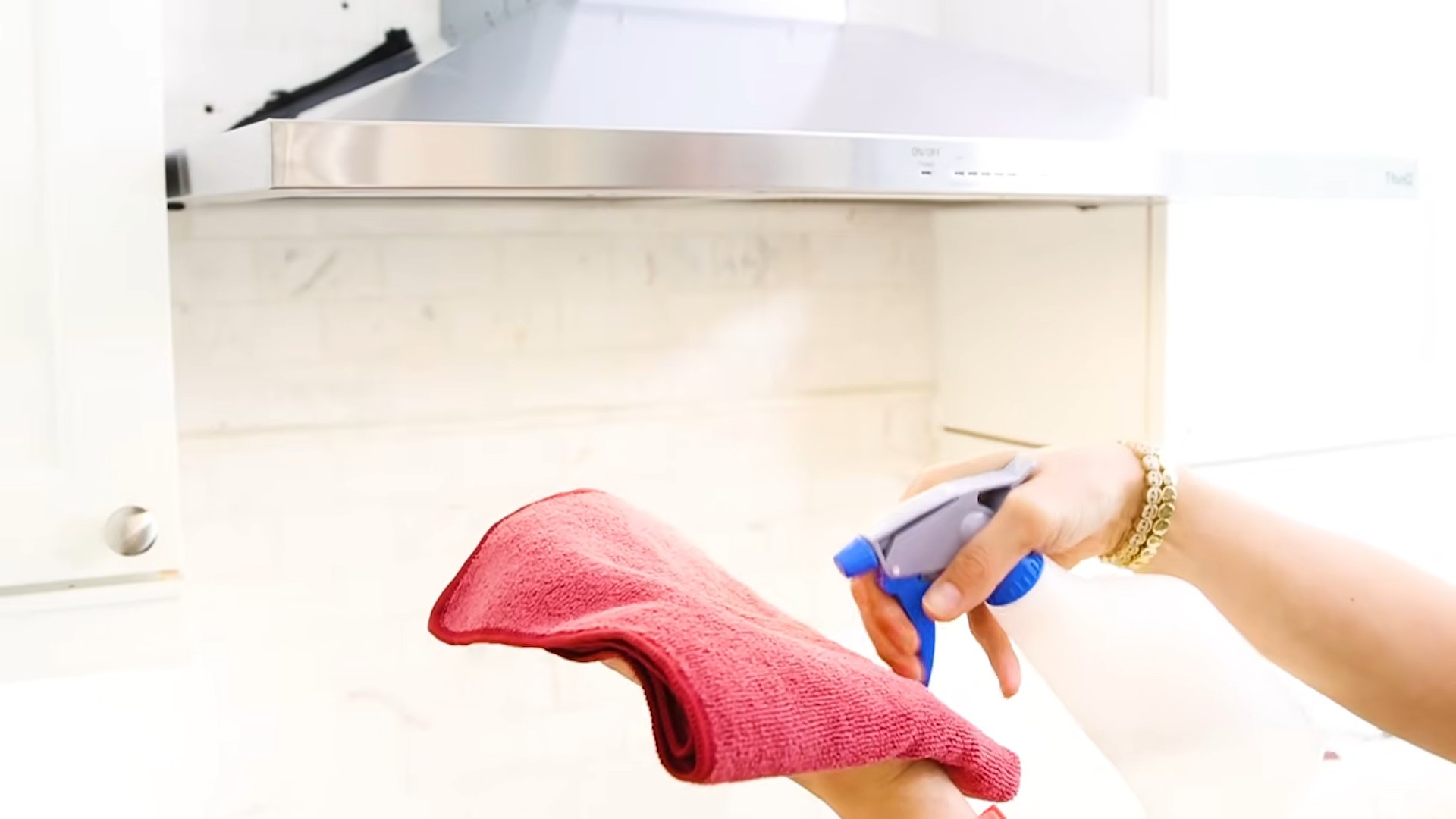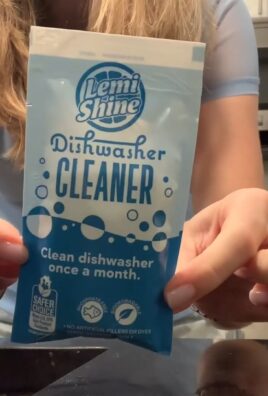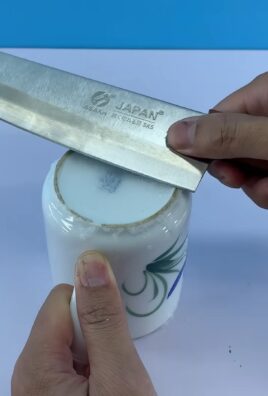Stainless steel polishing oil: the secret weapon to a gleaming kitchen! Are you tired of battling fingerprints, water spots, and dullness on your stainless steel appliances? I know I was! It felt like a never-ending cycle of wiping and scrubbing, only to be disappointed with streaks and smudges. But what if I told you there’s a simple, DIY solution that will leave your stainless steel sparkling like new, without breaking the bank?
The quest for perfectly polished metal surfaces isn’t new. Throughout history, various cultures have prized the beauty and durability of metals, developing techniques to maintain their luster. From ancient Egyptians polishing bronze mirrors to modern-day chefs caring for their stainless steel cookware, the desire for a pristine shine has always been present. But the harsh chemicals often found in commercial cleaners can be damaging to both your appliances and the environment.
That’s where this DIY stainless steel polishing oil comes in! This isn’t just another cleaning hack; it’s a game-changer. We’ll show you how to create a simple, effective, and eco-friendly polishing oil using ingredients you probably already have in your pantry. Say goodbye to expensive, chemical-laden cleaners and hello to a naturally brilliant shine that will make your kitchen the envy of all your friends. Get ready to unlock the secret to effortlessly maintaining the beauty of your stainless steel!

DIY Stainless Steel Polishing Oil: Restore the Shine to Your Appliances!
Hey everyone! Are you tired of looking at dull, smudged stainless steel appliances? I know I was! Fingerprints, water spots, and general grime can really take away from that sleek, modern look. Store-bought stainless steel cleaners can be expensive, and honestly, sometimes they just don’t cut it. That’s why I decided to create my own polishing oil, and let me tell you, the results are fantastic! It’s super easy to make, uses ingredients you probably already have, and leaves your stainless steel sparkling.
This DIY polishing oil not only cleans but also helps protect your stainless steel surfaces, leaving a beautiful, streak-free shine. Plus, you’ll know exactly what’s going into it, avoiding harsh chemicals. So, let’s get started!
What You’ll Need:
Before we dive in, let’s gather our supplies. This is a pretty straightforward project, so you won’t need anything too fancy.
* Light Mineral Oil: This is the base of our polishing oil. It’s great for cleaning and protecting stainless steel. You can usually find it at your local pharmacy or online.
* Lemon Essential Oil: This adds a lovely scent and also helps to cut through grease and grime. Plus, lemon is known for its antibacterial properties.
* White Vinegar: A natural cleaner and degreaser. It helps to remove stubborn stains and water spots.
* Spray Bottle: A clean, empty spray bottle is essential for easy application. Make sure it’s one that hasn’t been used for harsh chemicals.
* Microfiber Cloths: These are the best for polishing stainless steel because they won’t leave streaks or scratches.
* Measuring Spoons or Cups: For accurate measurements.
* Funnel (Optional): Makes pouring the ingredients into the spray bottle easier.
Step-by-Step Instructions:
Okay, now for the fun part! Here’s how to make your own stainless steel polishing oil:
1. Prepare Your Spray Bottle: Make sure your spray bottle is clean and dry. This will prevent any contamination of your polishing oil.
2. Measure the Mineral Oil: Pour 1 cup of light mineral oil into your measuring cup. This will be the main ingredient in our polishing oil, providing the shine and protection we’re looking for.
3. Add the White Vinegar: Now, add 1/4 cup of white vinegar to the mineral oil. The vinegar will help to cut through grease and grime, leaving your stainless steel sparkling clean.
4. Incorporate the Lemon Essential Oil: Add 10-15 drops of lemon essential oil to the mixture. This will give your polishing oil a pleasant scent and boost its cleaning power. Remember, essential oils are potent, so a little goes a long way.
5. Mix Well: Gently stir the ingredients together until they are well combined. You want to make sure the essential oil is evenly distributed throughout the mixture.
6. Pour into the Spray Bottle: Using a funnel (if you have one), carefully pour the mixture into your clean spray bottle.
7. Shake Well Before Each Use: It’s important to shake the bottle well before each use to ensure the ingredients are properly mixed. This will help to distribute the oil and vinegar evenly, giving you the best results.
Applying the Polishing Oil:
Now that you’ve made your polishing oil, let’s put it to work!
1. Spray Lightly: Lightly spray the polishing oil onto the stainless steel surface you want to clean. Don’t overdo it – a little goes a long way.
2. Wipe with a Microfiber Cloth: Using a clean microfiber cloth, wipe the surface in the direction of the grain. This will help to prevent streaks and ensure a smooth, even finish.
3. Buff to a Shine: Use a clean, dry section of the microfiber cloth to buff the surface to a beautiful shine. This will remove any excess oil and leave your stainless steel looking its best.
4. Repeat as Needed: For stubborn stains or heavily soiled areas, you may need to repeat the process. Just spray, wipe, and buff until you achieve the desired results.
Tips and Tricks for Sparkling Stainless Steel:
Here are a few extra tips to help you get the most out of your DIY stainless steel polishing oil:
* Always Wipe in the Direction of the Grain: This is crucial for preventing streaks and achieving a smooth, even finish. Look closely at your stainless steel appliance to determine the direction of the grain and always wipe in that direction.
* Use a Clean Microfiber Cloth: Dirty cloths can leave streaks and scratches, so always use a clean microfiber cloth for polishing.
* Don’t Over-Saturate: A little polishing oil goes a long way. Over-saturating the surface can leave a greasy residue.
* Test in an Inconspicuous Area First: Before applying the polishing oil to the entire surface, test it in a small, inconspicuous area to make sure it doesn’t damage the finish.
* Regular Maintenance: Regular cleaning and polishing will help to keep your stainless steel appliances looking their best. Aim to clean them at least once a week, or more often if needed.
* For Heavily Soiled Areas: For heavily soiled areas, you can try pre-treating them with a mixture of baking soda and water before applying the polishing oil. This will help to loosen the dirt and grime, making it easier to remove.
* Avoid Abrasive Cleaners: Abrasive cleaners can scratch and damage stainless steel, so avoid using them. Stick to gentle, non-abrasive cleaners like our DIY polishing oil.
* Store in a Cool, Dark Place: Store your polishing oil in a cool, dark place to prevent the essential oil from degrading.
* Experiment with Essential Oils: While I love lemon essential oil, you can experiment with other essential oils to find your favorite scent. Lavender, orange, and grapefruit are all great options. Just be sure to use pure essential oils and not fragrance oils.
* Dealing with Hard Water Spots: If you have hard water spots on your stainless steel, try wiping them down with a solution of equal parts white vinegar and water before applying the polishing oil. This will help to dissolve the mineral deposits and make them easier to remove.
Troubleshooting:
Even with the best instructions, sometimes things don’t go exactly as planned. Here are a few common issues you might encounter and how to fix them:
* Streaks: If you’re getting streaks, make sure you’re wiping in the direction of the grain and using a clean microfiber cloth. You may also be using too much polishing oil. Try using less and buffing the surface more thoroughly.
* Greasy Residue: If you’re leaving a greasy residue, you’re probably using too much polishing oil. Try using less and buffing the surface with a clean, dry microfiber cloth until the residue is gone.
* Dull Finish: If your stainless steel isn’t shining as much as you’d like, make sure you’re buffing the surface thoroughly. You may also need to repeat the polishing process.
* Cloudy Appearance: A cloudy appearance can be caused by hard water deposits or soap residue. Try cleaning the surface with a solution of equal parts white vinegar and water before applying the polishing oil.
Why This DIY Polishing Oil Works:
So, what makes this DIY polishing oil so effective? It’s all about the combination of ingredients:
* Mineral Oil: Provides a protective barrier against water spots and fingerprints, while also adding a beautiful shine.
* White Vinegar: Cuts through grease and grime, removing stubborn stains and water spots.
* Lemon Essential Oil: Adds a pleasant scent and boosts the cleaning power of the oil, thanks to its degreasing and antibacterial properties.
By combining these ingredients, you create a powerful cleaning and polishing solution that is both effective and safe for your stainless steel appliances.
Safety Precautions:
While this DIY polishing oil is made with natural ingredients, it’s still important to take a few safety precautions:
* Keep Out of Reach of Children: Store the polishing oil in a safe place where children cannot access it.
* Avoid Contact with Eyes: If the polishing oil comes into contact with your eyes, rinse them thoroughly with water.
* Test on a Small Area First: As mentioned earlier, always test the polishing oil on a small, inconspicuous area before applying it to the entire surface.
* Ventilation: When using the polishing oil, make sure the area is well-ventilated.
Enjoy Your Sparkling Stainless Steel!
And there you have it! A simple, effective, and affordable DIY stainless steel polishing oil that will leave your appliances looking brand new. I hope you enjoy making and using this polishing oil as much as I do. It’s a great way to save money, reduce waste, and keep your stainless steel looking its best

Conclusion
So, there you have it! Creating your own stainless steel polishing oil isn’t just a cost-effective alternative to store-bought products; it’s a way to take control of the ingredients you’re using in your home and achieve a truly remarkable shine. We’ve walked you through the simple steps, highlighting the benefits of each component and demonstrating how easy it is to whip up a batch of this incredible cleaner.
Why is this DIY trick a must-try? Because it delivers professional-grade results without the professional-grade price tag. You’re avoiding harsh chemicals often found in commercial cleaners, opting instead for a blend of natural oils that nourish and protect your stainless steel surfaces. Think about the peace of mind knowing exactly what you’re using around your family and pets. Plus, the satisfaction of creating something effective and eco-friendly is a reward in itself.
But the beauty of DIY lies in its adaptability. Feel free to experiment with different essential oils to customize the scent. A few drops of lemon essential oil can add an extra boost of cleaning power and a refreshing aroma. Lavender essential oil can impart a calming fragrance, while tea tree oil offers antibacterial properties. Just be sure to use essential oils that are safe for your surfaces and always test in an inconspicuous area first.
Another variation you might consider is adjusting the ratio of olive oil to mineral oil. If you live in a particularly humid climate, you might find that a slightly higher proportion of mineral oil helps to prevent streaks. Conversely, in drier climates, a little extra olive oil can provide added moisture and shine. The key is to find the perfect balance that works best for your specific environment and stainless steel appliances.
Don’t be intimidated by the idea of making your own cleaner. This stainless steel polishing oil recipe is incredibly forgiving and easy to adjust to your preferences. The process is quick, the ingredients are readily available, and the results are undeniably impressive. You’ll be amazed at how easily fingerprints, smudges, and water spots disappear, leaving behind a gleaming, streak-free surface.
We wholeheartedly encourage you to give this DIY stainless steel polishing oil a try. It’s a game-changer for anyone who wants to keep their stainless steel looking its best without breaking the bank or compromising on quality. Once you experience the difference, you’ll never go back to store-bought cleaners again.
And most importantly, we want to hear about your experience! Share your photos, tips, and variations in the comments below. Let us know what essential oils you used, what adjustments you made to the recipe, and how it worked for you. Your feedback will not only help other readers but also inspire us to continue creating helpful and informative DIY guides. Together, we can unlock the secrets to a cleaner, healthier, and more sustainable home. So, grab your ingredients, get mixing, and prepare to be amazed by the transformative power of homemade stainless steel polishing oil!
Frequently Asked Questions
What type of oil should I use?
The recipe typically calls for a combination of mineral oil and olive oil. Mineral oil is excellent for creating a protective barrier and preventing streaks, while olive oil provides a natural shine and helps to condition the stainless steel. You can also use other light oils like fractionated coconut oil or even baby oil as a substitute for mineral oil, but be sure to test a small area first. Avoid using heavy oils like vegetable oil, as they can leave a sticky residue.
Can I use essential oils other than lemon, lavender, or tea tree?
Absolutely! The beauty of DIY is the ability to customize. However, it’s crucial to choose essential oils that are safe for use on stainless steel and won’t cause any discoloration or damage. Citrus oils like orange, grapefruit, and lime can also be effective cleaners, but use them sparingly as they can be slightly acidic. Peppermint and eucalyptus essential oils offer a refreshing scent and can help to deter pests. Always test a small, inconspicuous area before applying the oil to the entire surface.
How often should I use this stainless steel polishing oil?
The frequency of use depends on how often your stainless steel surfaces get dirty. For high-traffic areas like kitchen appliances, you may want to use the oil once or twice a week. For less frequently used surfaces, such as stainless steel trim or decorative items, once a month may be sufficient. Over-application can lead to a buildup of oil, so it’s best to start with a small amount and reapply as needed.
Will this polishing oil remove scratches from my stainless steel?
While this polishing oil can help to minimize the appearance of minor scratches by filling them in and creating a more uniform surface, it won’t completely remove deep scratches. For more significant scratches, you may need to use a specialized stainless steel scratch removal kit or consult with a professional. This oil is primarily designed to clean, polish, and protect your stainless steel surfaces.
How should I store the stainless steel polishing oil?
Store your homemade stainless steel polishing oil in an airtight container in a cool, dark place. A glass bottle or jar is ideal, as it won’t react with the oils. Be sure to label the container clearly so you don’t accidentally mistake it for something else. The oil should last for several months if stored properly. If you notice any changes in color, odor, or consistency, it’s best to discard it and make a fresh batch.
Is this polishing oil safe for all types of stainless steel?
This polishing oil is generally safe for most types of stainless steel, but it’s always a good idea to test it in an inconspicuous area first, especially if you have brushed or coated stainless steel. Some coatings may react differently to the oils. If you’re unsure, consult the manufacturer’s instructions for your specific appliance or surface.
Can I use this polishing oil on other surfaces besides stainless steel?
While this polishing oil is specifically formulated for stainless steel, it can also be used on other metal surfaces like chrome and aluminum. However, avoid using it on painted or coated surfaces, as it may damage the finish. Always test a small area first to ensure compatibility.
What if I don’t have mineral oil?
If you don’t have mineral oil on hand, you can substitute it with another light, clear oil like fractionated coconut oil, baby oil (unscented), or even a high-quality, food-grade white oil. These alternatives will provide a similar protective barrier and help to prevent streaks. Just be sure to test a small area first to ensure compatibility.
How do I clean up excess oil after polishing?
After applying the stainless steel polishing oil, use a clean, dry microfiber cloth to buff the surface and remove any excess oil. This will help to create a streak-free shine and prevent the buildup of residue. You may need to use a few different cloths to achieve the desired result.
Can I add vinegar to this recipe for extra cleaning power?
While vinegar is a great natural cleaner, it’s not recommended to add it directly to this polishing oil recipe. Vinegar is acidic and can potentially react with the oils, causing them to break down or become cloudy. If you want to use vinegar to clean your stainless steel, it’s best to do so separately before applying the polishing oil. Simply wipe down the surface with a diluted vinegar solution, rinse with water, and then dry thoroughly before applying the oil.




Leave a Comment